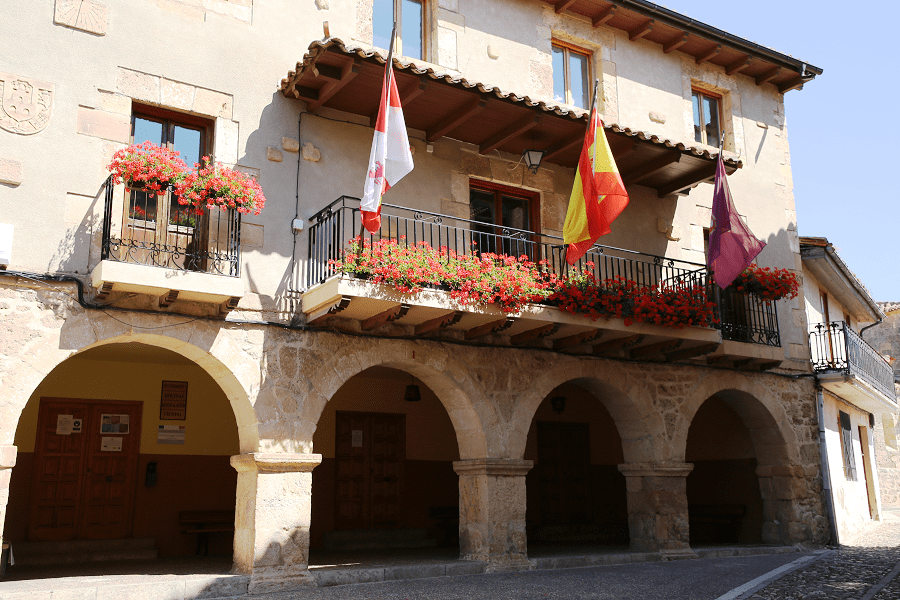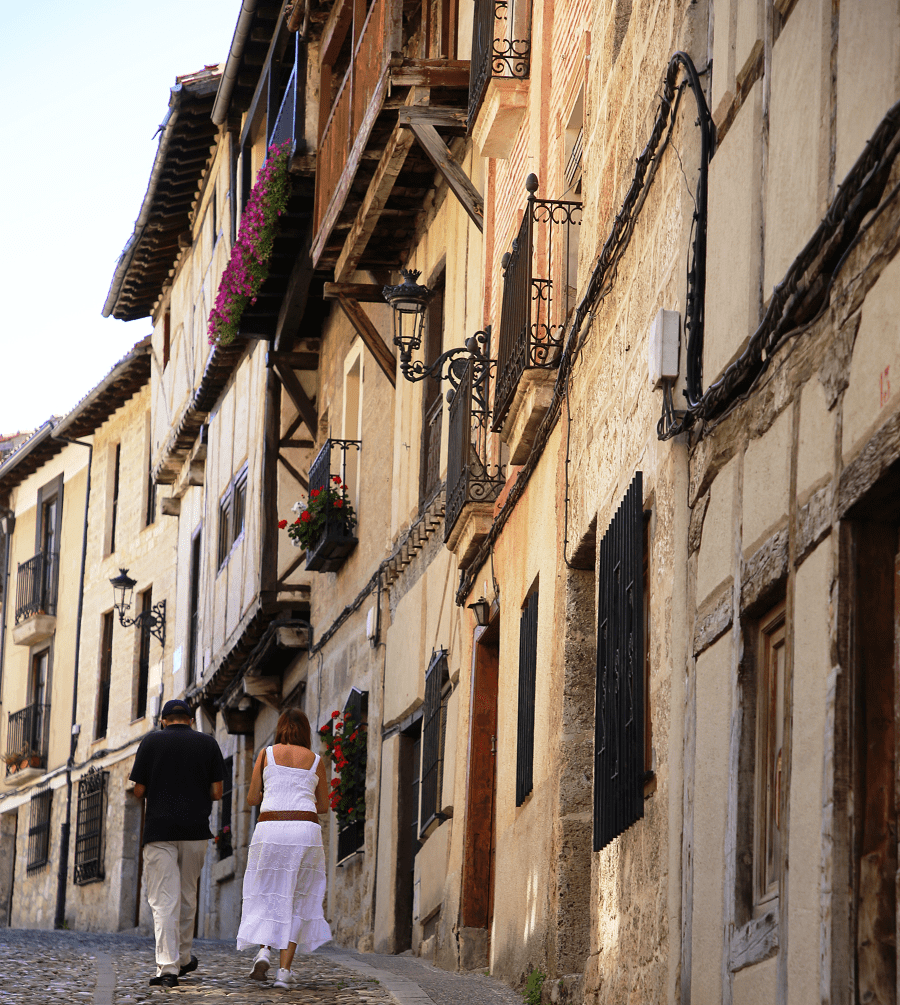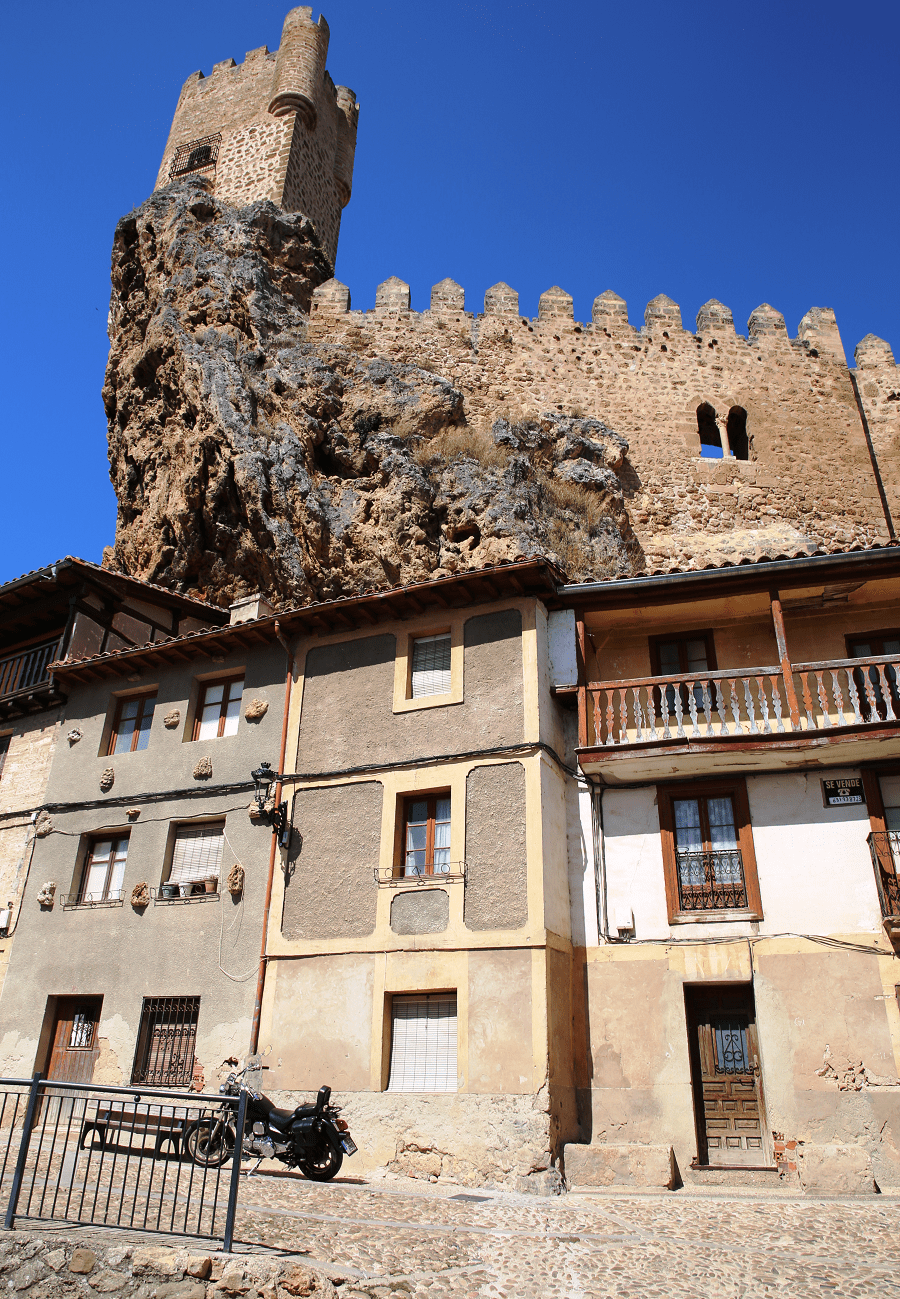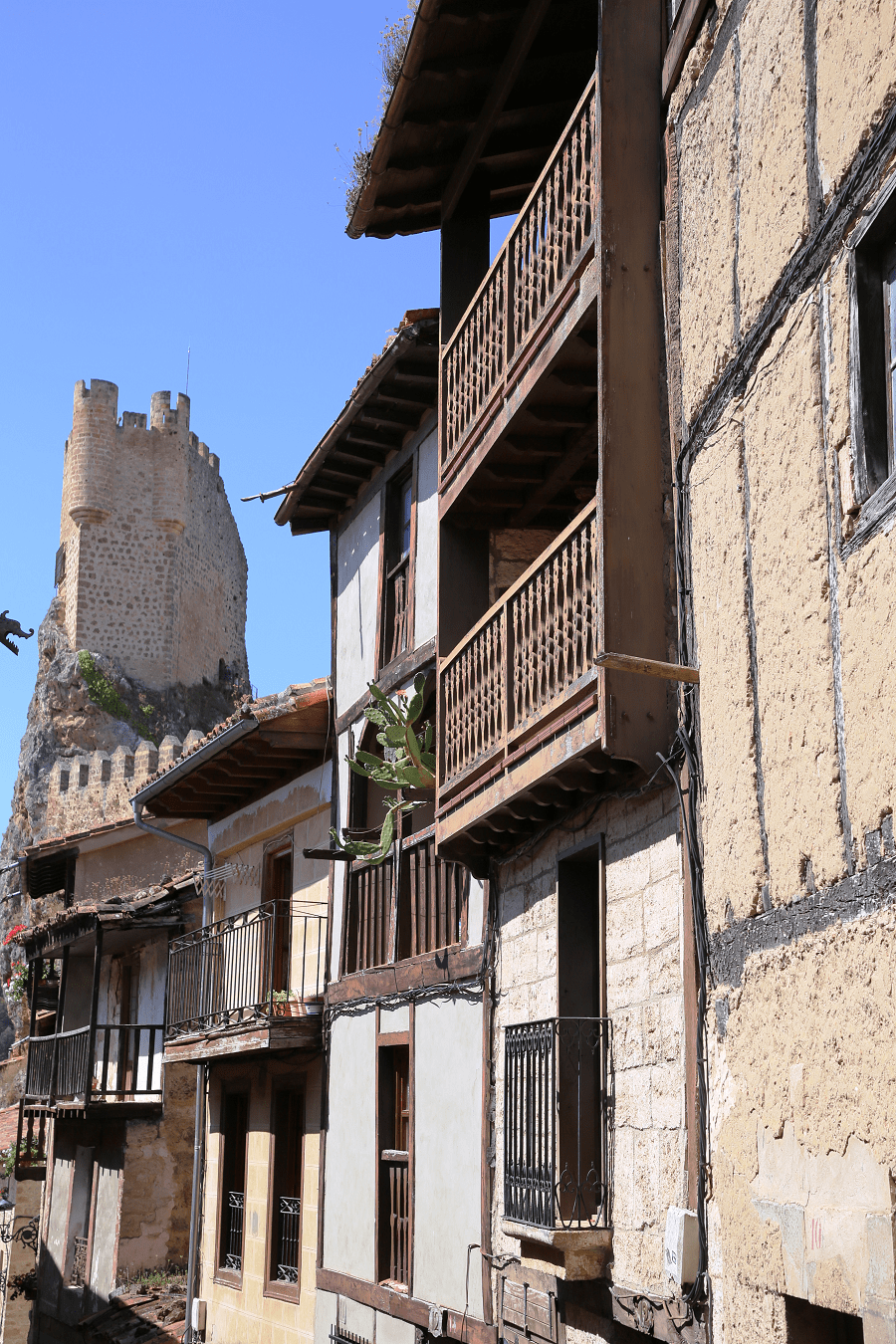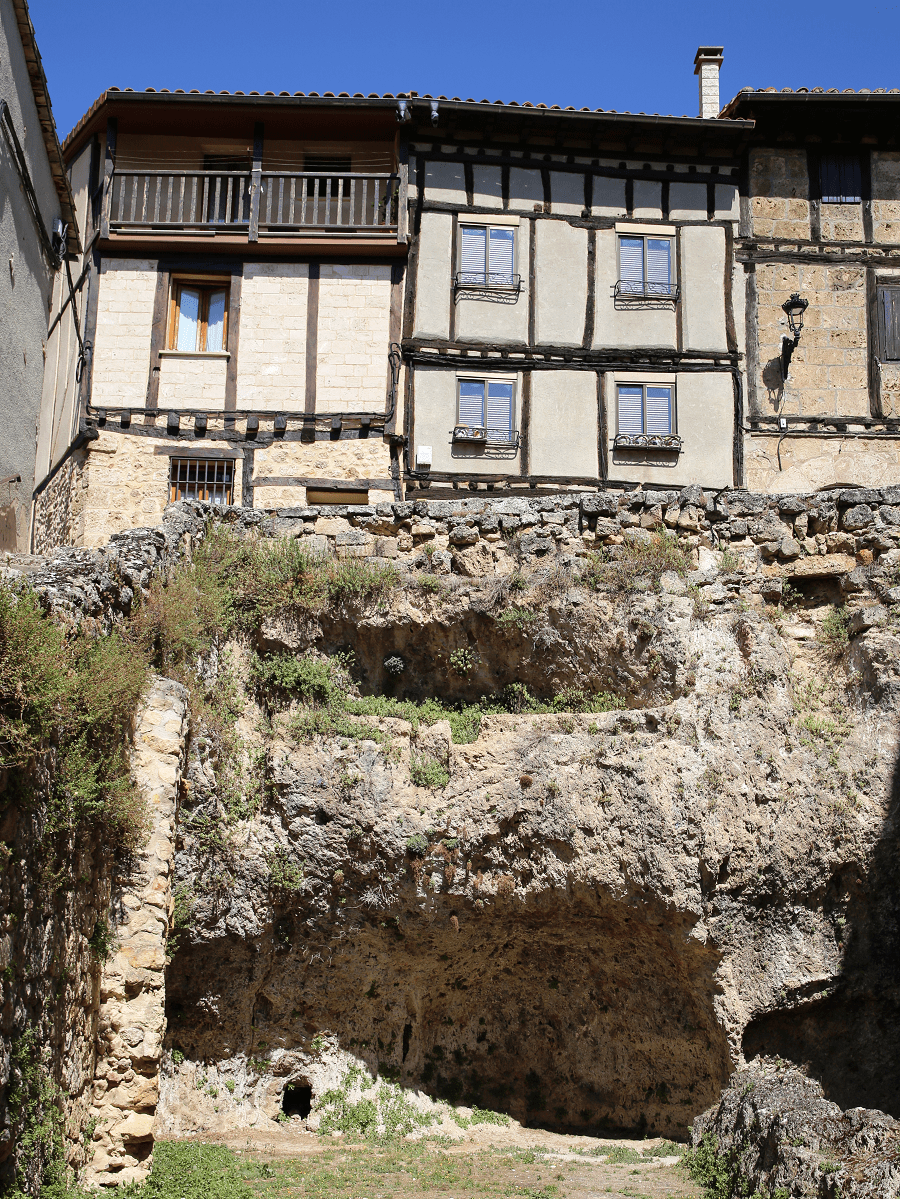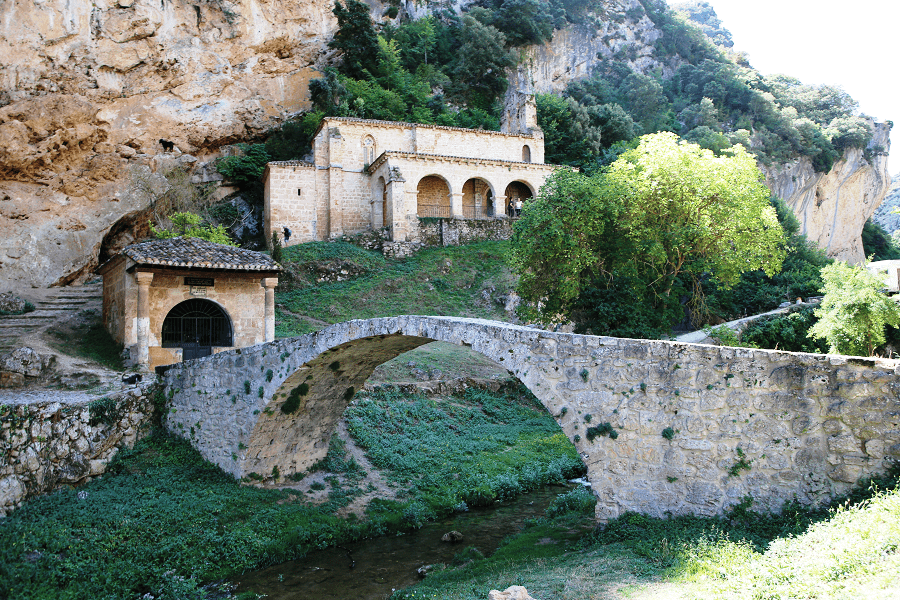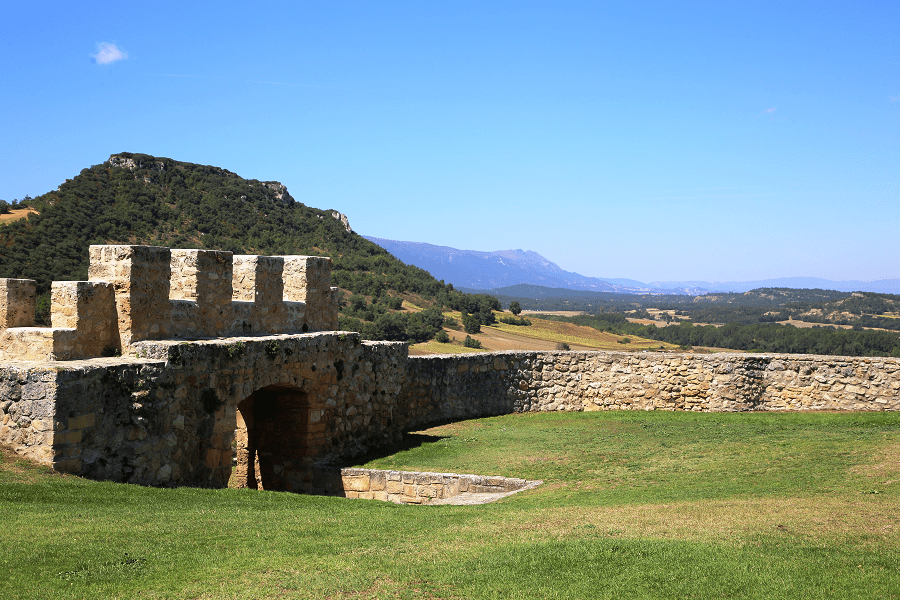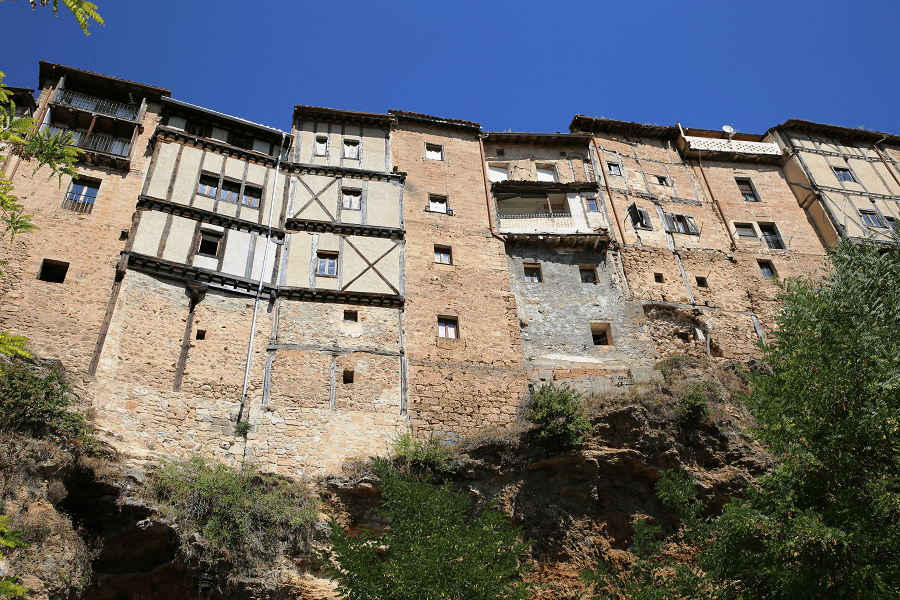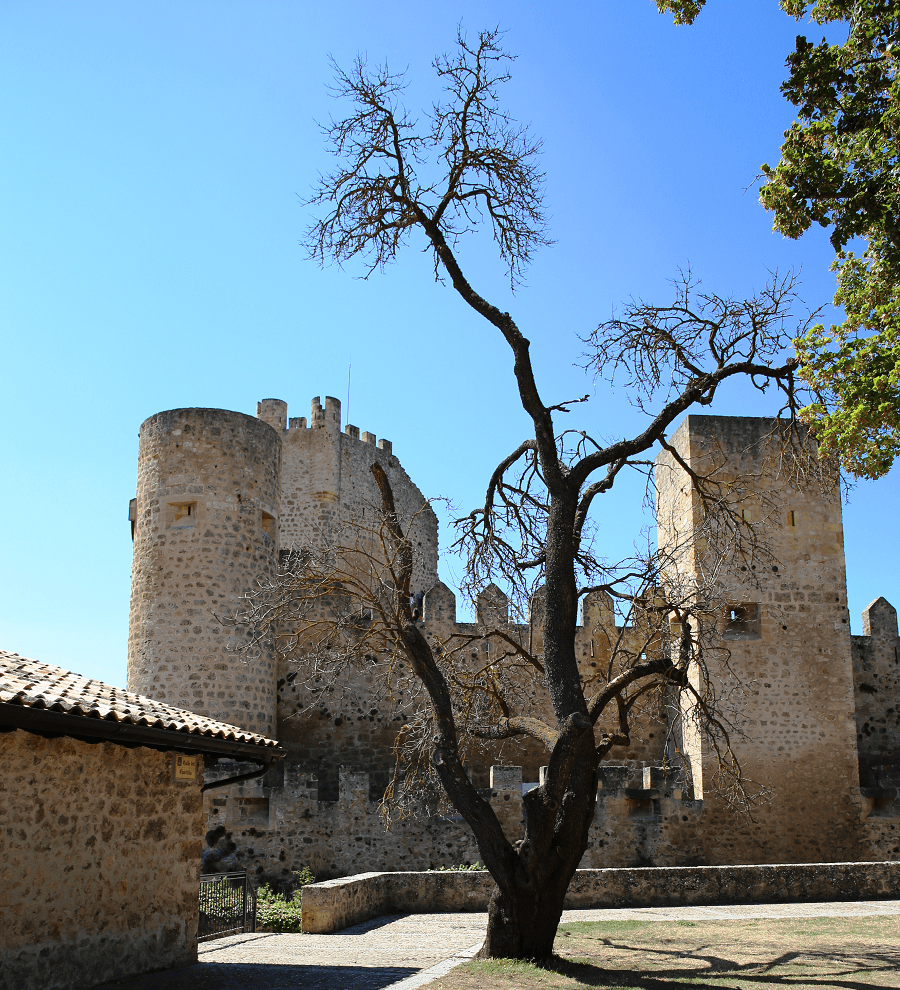Frías is a city and a municipality in Spain, north of the province of Burgos, autonomous community of Castile and León.
On the hill of La Muela, and close to the wide river of Ebro, a strategic enclave was established for the passage of said river, since Roman times and especially in medieval times, which linked the Cantabrian coast and the plateau, giving rise to the notable prosperity of Frías and its monumental complex.
It maintains a medieval urban structure that crowns the castle of the Velasco family and the church of San Vicente. The buildings maintain a constructive system in which they are attached to each other. The sunroom on the upper floor uses tuff and timber framing.
It is considered to be the smallest “city” in Spain, having been given that title in 1435.
Since 2014 the city has been a part of the network “The most beautiful towns in Spain“.
Main attractions
The castle of Frías, officially the castle of the dukes of Frías and also called the castle of the Velasco, is located on the rock of La Muela, around which the urban fabric of the city of Frías develops. From its privileged location it controls the Tobalina valley and the Ebro river crossing by means of the bridge, also fortified, which is located at its feet. This is one of the main routes that have historically linked the Castilian plateau with the Cantabrian coast.
It is considered one of the most spectacular rock castles in Spain. The current complex is made up of a mixture of constructions from the 12th, 13th, 15th and 16th centuries.
Built in well-preserved masonry and with the interior exempt from auxiliary constructions, it is dedicated to tourist uses and for the realization of recreational and sporting events. The castle next to the church of San Vicente crowns the urban framework that surrounds the hill of La Muela and is a referential vertex of the city’s silhouette.
It is protected by Decree April 22, 1949 and by Law 16/1985 on Spanish Historical Heritage.
Parish Church of San Vicente Mártir and San Sebastián is located at one end of the rocky cliff, only a few parts of its primitive Romanesque construction remain, since after the fall of its tower in 1904 a new one was erected. Its main portal is now on display at the Cloisters Museum in New York.
Between the 14th and 16th centuries, two chapels were added to the main nave, the Santo Cristo de las Tentaciones and the Visitación chapels. Inside you can admire altarpieces, tombs, paintings, as well as a wide collection of religious imagery. It is located in the Plaza del Cardenal Benlloch.
It belongs to the Archpriesthood of Medina de Pomar, Archdiocese of Burgos.
Other places of interest:
Hanging houses. These houses, with ground floor and two or three additional floors and, eventually a wine cellar, are supported by each other, creating streets at different height. In some cases these house hang from the rock. Their structure is made of walls of limestone within a wood structure.
Salazar Palace and barracks. This building is placed in Alfonso VIII Square, close to the castle. Initially was the palace of the Salazar´s family, and a coat of arms can be found over its door with the thirteen stars of the Salazar´s.
Roman Road. An important roman road connecting the Castilian plateau and the north of Spain crosses Frías 500 meters east of the Romanic bridge.
Medieval Bridge. Frías medieval bridge has 143 meters length and 9 arches. It was built in a Romanic style, and refurbished in the 14th century, when a defensive tower with arrow-holes and battlements, was built in the center.
The Jewish quarter, almost unknown until the last decades from 20th century, was important at its time. Mentions to Jewish inhabitants during the 14th century can be found in the cartulary of Santa María de Vadillo, although there are references even from the previous century.
The hermitage of Santa María de la Hoz, the hermitage of Cristo de los Remedios and the old medieval bridge of Roman origin that crosses the Molinar river, is about five minutes by car from Frias to the cityu of Tobera. The temple, which is almost carved in a large rock, dates back to the thirteenth century and displays both Romanesque and Gothic elements, as well as a portico with arches offering good views on the surroundings. At its feet stands a second hermitage of diminutive size and later construction –seventeenth century– that houses an altar dedicated to Christ of the Remedies.
Traditional holidays
The most relevant festival in the city of Frías is the so-called Feast of the Captain. It takes place on June 24 and it commemorates the rebellion of the people of Frías against feudal power and also commemorates the liberation of the Napoleonic troops in the War of Independence. In this festival, the town elects a captain who goes through the different streets accompanied by some dancers with flags.
In May the Cruz de Mayo is celebrated and in September the feast of the Holy Christ. At the agricultural and craft fair, at the end of August, everything from handmade objects made by the jewelry workshop school to local products, such as fruits and vegetables, among which the well-known lettuces stand out, are sold and exhibited.
How to get to?
From Burgos 1 hr 8 min (81.7 km) via AP-1
From Valladolid 2 hr 20 min (204 km) via A-62
From Madrid 3 hr 27 min (326 km) via A-1
Main information
Area: 29 sq. km
GPS coordinates: 42°45′41″N 3°17′39″W
Language: Spanish
Population: 270
Currency: Euro
Visa: Schengen
Time: Central European UTC +1, in summer +2




